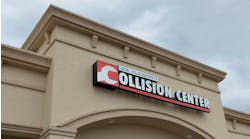To say Kyle Kuzdek values customer feedback would be a vast understatement. Truth be told, as the director of Szott M-59 Collision in eastern Michigan, he views feedback—like that provided by returned customer satisfaction index surveys—as essential to improving his business.
“A survey is almost paramount to our livelihood,” says Kuzdek, who has helped push Szott’s CSI score to the upper 90s. “You let people know that surveys are huge, and hopefully we met your expectations. If we didn’t, let us know.
“If they don’t fill out surveys, it hurts us.”
Yet, many consumers feel bombarded by survey requests these days, and many have developed a distaste for them, viewing them as an annoyance. So it’s natural to wonder: How can a body shop break through, and get a significant amount of customers to participate in surveys?
Kuzdek, who has been in the industry nearly a quarter century, has discovered multiple keys for getting clients to provide valuable feedback via CSI surveys. Among those keys:
Explain the Importance.
At Szott M-59 Collision, Kuzdek’s employees let it be known that customer service is a top priority. That tends to win over many clients, and make them receptive to CSI surveys.
“I think the biggest thing is educating people that you’re going to get this survey,” Kuzdek explains, and “our goal is to get you to be 100 percent satisfied. … We want to kind of roll out the red carpet.”
Stress it Early and Often.
Kuzdek suggests reminding clients on multiple occasions that they will eventually be getting a CSI survey from the body shop. It should at least be noted before and after the repair, he feels.
Reminding customers “has to be part of the process—an integral part when you’re talking to them. If you’re only doing it sporadically, you’re never going to get” much response, Kuzdek says.
Stress the Importance to Staff.
Even if it requires taking measures like putting reminder notes on invoices, it’s imperative to inform employees that you seek customer feedback. Kuzdek typically appeals to employees by noting how rewarding it can be for your business to be viewed as reputable within its community.
He repeatedly reminds employees of his desire to get CSI surveys returned, too, because he notes that, in 2018, people “have to hear things 10 times before we actually get it.”
Make it Convenient.
According to the American Customer Satisfaction Index, virtually any type of business survey is destined to get low response rates nowadays—typically between 5–15 percent. Some delivery methods have fallen out of favor more than others, though; Kuzdek has found his customers seem to be more and more irritated by phone calls as time goes on, for example.
“It’s so easy with a text,” he says. “People are more apt to quickly respond to it, and put a note in there. … Second best would probably be mail.”
Use a Third-Party Service.
Employing a third-party service to remind customers of pending surveys can often save body shop staffs time, and also improve return rates to some extent.
Kuzdek’s employer often has its service department use an automated service that calls clients, for example, and reminds them that surveys are forthcoming.
Incentivize Customers.
To shake things up and inspire greater customer feedback, occasional incentives can be provided to customers who fill out surveys. Some dealerships, for instance, offer free car washes or oil changes to customers who return CSI surveys. That’s a method with merit, in Kuzdek’s experience.
Request Constructive Criticism.
Even if you get a wide swath of clients to return surveys, that feedback isn’t likely to be helpful, if survey questions aren’t probing. Kuzdek feels the following questions are the most valuable on collision repair surveys:
- Is there anything our facility should’ve done differently, in your opinion?
- Were you happy with the repair process?
- Are you happy with the final results of the repair?
“I think you have to break down the different aspects of what they went through, you know?” Kuzdek notes of customers. “That way, if you do get feedback, you know where the issue is.”
Follow up and Take Action.
Often, customer feedback can serve as an invaluable learning tool for a collision repair facility’s staff. At Szott M-59 Collision, feedback is shared on an individual level for coaching and employee reviews, for instance. Additionally, larger meetings that include the entire staff are held at least every two months to recap recent client feedback.
“If you’re fortunate enough to get that feedback, I always like to stop the presses, back up, and say, ‘Okay, how did we get to this situation?’” Kuzdek says. “Just doing that as a team, and learning together, and saying, ‘Hey, what could we have done to prevent this?’”



